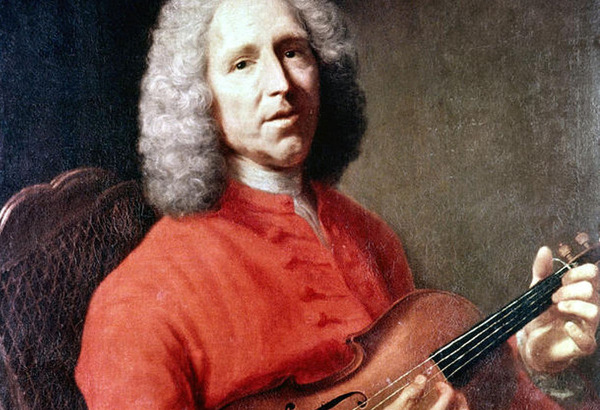
Jean-Philippe Rameau was a highly important French composer and a music theorist of the Baroque Era. He is widely regarded as the successor of Jean-Baptiste Lully as the main composer of french opera.
There is very little information about Rameau’s early years. According to some records, he was born on September 25, 1683 in the city of Dijon. His father was an Organist who, reportedly, taught Rameau music before he could even read. As a child, he was known to disrupt classes with his abrupt bouts of singing. He worked as a travelling violinist and organist in his early years and by 1706 he had moved to Paris, where he published his earliest surviving publications, his first being “Pieces de clavecin”; a book for the harpsichord.
Like his father, Rameau also served as a church organist at various churches in Lyon, Clermont and in his hometown, Dijon. As a church organist, he composed many religious works, mostly motets and cantatas. In 1722, Rameau published a work on music theory that truly elevated his status; the work was called “Traite’de l’harmonie”, or “Treatise on Harmony”. In 1728, Rameau published another groundbreaking theoretical work titled “Nouveau systeme de musique theorique”. Rameau’s theoretical works were critiqued to be scientifically innovative, mathematical, analytical and creative.
Rameau achieved the height of fame only after he delved into the heart of opera. He was inspired to do so after he watched de Monteclair’s “Jephet”, and in 1733, Rameau’s first opera, “Hippolyte et Aricie” was premiered at the Academie Royale de Musique in Paris. The work was seen as the first important opera after Jean-Baptiste Lully’s last. The musical community of France was split into ‘Rameauneurs’ and ‘Lullyistes’, the ‘Rameauneurs’ supported the wealth of Rameau’s innovation, and the ‘Lullyistes’ considered Rameau’s work to be an attack on the French musical tradition.
After “Hippolyte et Aricie” Rameau was mostly funded by the wealthy Alexandre Le Riche until 1753. Under his patronage, Rameau served as conductor of Alexandre’s wife’s private orchestra. The 1730s saw Rameau produce four masterpieces. The first being “Les Indes Galantes”, an opera ballet that was premiered in 1735, the second, “Castor et Pollux (1737)”, the third, “Dardanus (1739), and the fourth “Les Fetes d’Hebe (1739)”. In the year 1745, Rameau was commissioned to compose for several celebratory occasions, including the victory of the French at the Battle of Fontenoy, and the wedding of Louis Dauphin of France to the Spanish Princess, Maria Teresa Rafaela. Rameau also wrote one of his most celebrated operas, “Platee”, during that year. Rameau also worked with Voltaire on an opera ballet titled “Le temple de la gloire” and a comedic ballet titled “Le princesse de Navarre”.
Rameau was also famous for his quarrels with the French Thinker, Jean Jacques Rousseau, who accused Voltaire and Rameau of stealing credit for his work. He was also involved in the great ‘Querelles des Bouffons’, which was a famous rivalry between the French ‘tragedie en musique’ genre of opera with the Italian buffa genre.
Rameau’s publications dropped off as he neared his death. His last two operas, ‘Les Paladins’ and ‘Les Boreades’ were written in 1760 and 1763 respectively. Jean-Philippe Rameau died on September 12, 1764 due to a high fever. Today, he is remembered as one of the most important French Composers of All-Time.